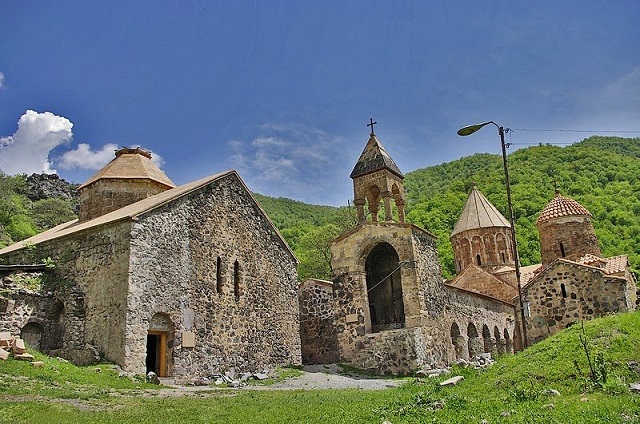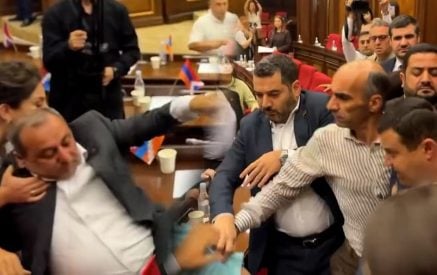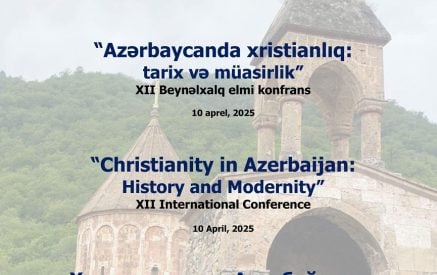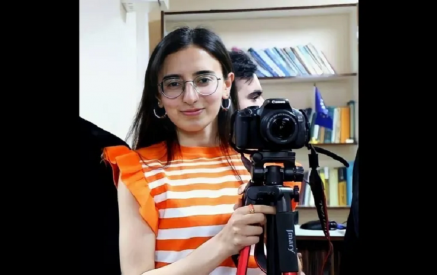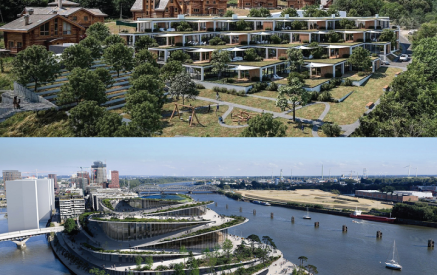The Armenian Mirror-Spectator. BAKU (Azernews, Turan, multiple sources) – According to a report from the Azerbaijani Trend News Agency, a new priest has been sent to Dadivank Monastery, which Azerbaijanis are calling Khudavang or Khudavend, and he visited there on December 4. For the time being, Dadivank is under the protection of Russian peacekeeping troops.
The priest, Rafig Danakari, declared that there are 400 churches in Azerbaijan which will be “visited” along with over 300 in the Karabakh region. He called these churches, which are Armenian, Albanian, referring to the Caucasian Albanian people.
Danakari said in a related report, “Our trip to the monastery was timed to coincide with the great Christian holiday, which was celebrated on the 4th of December. Despite all the obstacles, we prayed and lit candles, and also took pictures.” A video of the trip is posted here.
He claimed that Armenians destroyed all historical and religious items in Dadivank after occupying Kalbajar district in 1993, yet said they also took historical books, icons and other ecclesiastical items there to Echmiadzin in Armenia.
Read also
Danakari and the visitors allegedly wanted to film themselves praying in the monastery, and when they were told they could pray but not film, they held a service outside, according to a post by Cavid Aga, an Azerbaijani journalist living in Turkey.
Elnur Kalbizade, head of the Caucasus Policy Department at the Institute of Caucasian Studies of the Azerbaijani National Academy of Sciences, claims that Armenians carried out what he called “falsifications” of the identity of the monastery after taking control of the region, in part at the expense of American-Armenian businesswoman Edele Hovnanian.
Evidently the Danakari visit and such claims are part of a broader Azerbaijani attempt to usurp the Armenian religious and cultural heritage in Artsakh and other parts of Azerbaijan. Caucasian Albania is called Aghuank in Armenian. It last had an independent state in medieval times and its people became largely Islamicized and Turkified, though a smaller segment became absorbed into the Armenian people.
Danakari in one Azernews article claimed, “The Armenians destroyed all historical and religious objects and literature. In the churches and monasteries located in the territories formerly occupied by the Armenians, Armenian crosses were installed on the Albanian churches and monasteries.”
Danakari is deputy chairman of the Albanian Udi Christian Community of Azerbaijan. He was also seen early this November at the Church of St. Elisha the Prophet, perhaps not coincidentally newly renovated in the village of Nij. The Udi claim to be descendents of the Caucasian Albanians.
In a December 6 report, Turan News Agency quoted Robert Mobili, the head of the Udi community of Azerbaijan, as declaring that prior news reports (such as in Trend or Azernews) stating that Danakari was appointed as a preacher or priest for Dadivank, were incorrect. Mobili specified that 12 members of the Udi Christians visited on December 4. They were accompanied by journalists, Azerbaijani soldiers members, and a representative of the public relations department of the Ministry of Defense of Azerbaijan. Russian peacekeepers guarding the monastery were also present.
Mobili said that they encountered seven or eight Armenians, some of them in the clothes of clergy, who did not allow the journalists to film the Udi’s service in the church. Modili complained that “The Armenians who are there behave like masters, as if nothing happened in the last 2 months. They are under the protection of the Russian military.”
It seems according to Mobili’s account that the Armenians and Udis argued back and forth heatedly about historical and religious issues, but Mobili declared that such issues should be resolved at the state level. Nonetheless, the Udis, according to Mobili, were able to go into the church and “prayed for the repose of the Azerbaijani martyrs, who died heroically for the liberation of Karabakh [from the Armenians].”
Modili concluded: “For 200 years, the Albanians of the Caucasus did not have their own high priest. Now we are working on these organizational issues.”



















































